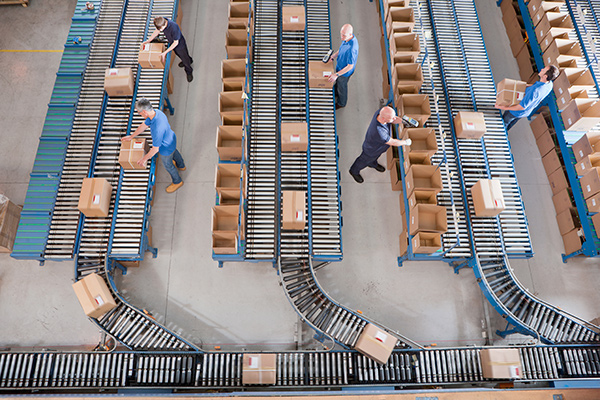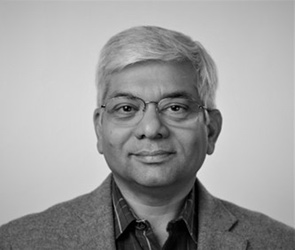Manufacturers adapt with regional hubs, tariff engineering, and smarter planning to keep products on shelves.
By Rohit Tripathi, VP of Industry Strategy, Manufacturing at RELEX
Every new tariff ruling that pops up as another breaking news notification sets off a predictable chain of events. Importers scramble to calculate new landed costs, suppliers take on surcharges, and retailers weigh whether to absorb the hit or adjust prices. Customers may not notice the change that day, but in the weeks that follow, the ripple effect shows up as higher price tags, tighter assortments, or delays in replenishment.
What’s also predictable now is that these aren’t isolated shocks; they are a steady rhythm of disruption, forcing manufacturers to rethink how they design and operate their supply chains.
The Institute for Supply Management’s (ISM) latest report underscores the pressures manufacturers are facing. Economic activity in the manufacturing sector contracted for a sixth consecutive month. Prices remain in expansion territory at an index of 63.7, but imports continue to weaken, falling 1.6 percentage points, and employment is sluggish. Respondents cited tariffs as a direct driver of surcharges, production delays, and planning headaches.
This environment is accelerating a major shift in the global supply chain. Regional hubs are replacing what was once a single integrated network. But that’s only one piece of the story. Brands are reshaping operations on multiple fronts to adjust to this new reality of tariffs and rising costs.

Shifting fulfillment and inventory isn’t just a trend or a short-term fix to the current situation. Mexico, Eastern Europe, and parts of Southeast Asia are becoming essential locations for final assembly and packaging. They offer cost efficiency, agility, and reduce geopolitical exposure. For key players in apparel, electronics, and baby products, these hubs have become the default choice instead of an alternative.
This shift will accelerate in 2026 as companies embed resilience directly into their supply chains. Lowest landed cost is no longer the primary driver. Time-to-market and tariff resilience now sit at the top of the priority list. The result is a fundamental restructuring of how products move from conception to consumer.
While regional hubs address structural risk, companies are also making adjustments to their products to soften the impact of tariffs. The practice of “tariff engineering” — altering products or processes to qualify under different Harmonized System (HS) codes — has been used for years, but now it’s become a common survival tactic.
Companies have resorted to tactics such as adding pockets to shirts to qualify for a lower tariff category, or even importing products under one classification and then modifying them after arrival to avoid higher duties.
These examples highlight how deeply tariffs now shape design and production choices. Manufacturers that can align legal, engineering, and supply chain teams quickly are the ones able to protect margins without delaying shipments or compromising product quality.
Retailers also participate in tariff engineering through private label products. These goods give them full control over formulation, sourcing, and pricing, allowing them to reformulate recipes, shift assembly, or adjust packaging to protect their margins.
Companies are also reshaping operations through stockpiling and scenario planning, but strategies of the past are no longer sustainable in today’s environment. Carrying costs are too high and capital is too tight to justify warehouses filled with “just in case” inventory. Instead, companies are applying more targeted approaches, concentrating safety stock on high-margin or fast-turning SKUs and using optimization tools to decide when pre-buying is worth the investment.
Scenario planning has become an essential capability to show resilience as tariffs change, especially through AI. Teams are able to run simulations to quickly see cost impacts, find alternative suppliers, or adjust product designs to align with lower duties. It allows supply chain teams to build playbooks for different outcomes before they happen. Planners can then activate these playbooks quickly, cutting reaction time from months to days.
This flexibility is critical in today’s lean environment. ISM data shows inventories remain “too low,” which is a red flag this close to peak season. Store-level availability will vary widely this season depending on how well each brand has balanced flexibility with foresight.
The risk of empty shelves has evolved. It’s no longer about one big shock disrupting everything, like the toilet paper shortage at the beginning of the pandemic. These days, it’s death by a thousand cuts. Changes like fluctuating surcharges, longer customs clearance, and HS code reclassifications that hit with zero notice stack on top of each other to tip brands off balance. The companies that are doing well are creating strategic insulation with modular scenario-driven planning.
All of these adjustments ultimately point toward one outcome: keeping products available where customers expect them. Freight rates and sourcing strategies don’t matter to customers; they measure success by whether the item they want is on the shelf at a fair price. That makes on-shelf availability (OSA) the defining metric for manufacturers and retailers alike.
But it’s a cross-functional challenge where failures in one area quickly cascade into another. If tariffs drive up input costs, but those costs aren’t managed through sourcing adjustments or product reformulations, the impact shows up as empty shelves or higher prices, eroding consumer trust.
Reframing supply chain strategy around OSA changes how decisions are made day to day and forces alignment across functions. Supplier portfolios stretch beyond single-country dependencies, even when costs tick up. Buffers are placed strategically across the network, not scattered everywhere. Contracts are written with shorter terms and built-in escalation clauses so pricing can move in step with reality.
In the background, planning platforms that simulate tariff impacts and automate replenishment under supplier and capacity constraints support this new focus. Exception alerts and OSA dashboards ensure finance, supply chain, and merchandising teams are working toward the same target. When OSA is treated as the north star, the supply chain becomes both simpler and stronger.
The ISM report reinforces that this shift in the supply chain is not short-term. A sixth consecutive month of contraction in manufacturing proves that companies need to build resilience into their supply chains and not rely on reactive measures when changes inevitably happen. Companies need to treat tariffs as a constant design factor, follow the shift into regional hubs, and align operations around OSA.
Companies that continue waiting for trade stability to return will find themselves managing yesterday’s supply chains in tomorrow’s market. Market leaders are building supply chains that bend with uncertainty and keep products on the shelf even when volatility hits the hardest.

About the Author:
Rohit Tripathi, VP of Industry Strategy for Manufacturing at RELEX, specializes in supply chain and business operations including RELEX’s AI-led transformation. He has more than 25 years of experience managing global teams in the US, India, Brazil, and Europe, delivering AI enabled products and solutions for supply chain, IoT, customer experience, and supply chain resiliency.
Read more from the author:
How Brands Are Using AI to Rethink Tariff Response | July 14, 2025
In this episode, I sat down with Beejan Giga, Director | Partner and Caleb Emerson, Senior Results Manager at Carpedia International. We discussed the insights behind their recent Industry Today article, “Thinking Three Moves Ahead” and together we explored how manufacturers can plan more strategically, align with their suppliers, and build the operational discipline needed to support intentional, sustainable growth. It was a conversation packed with practical perspectives on navigating a fast-changing industry landscape.